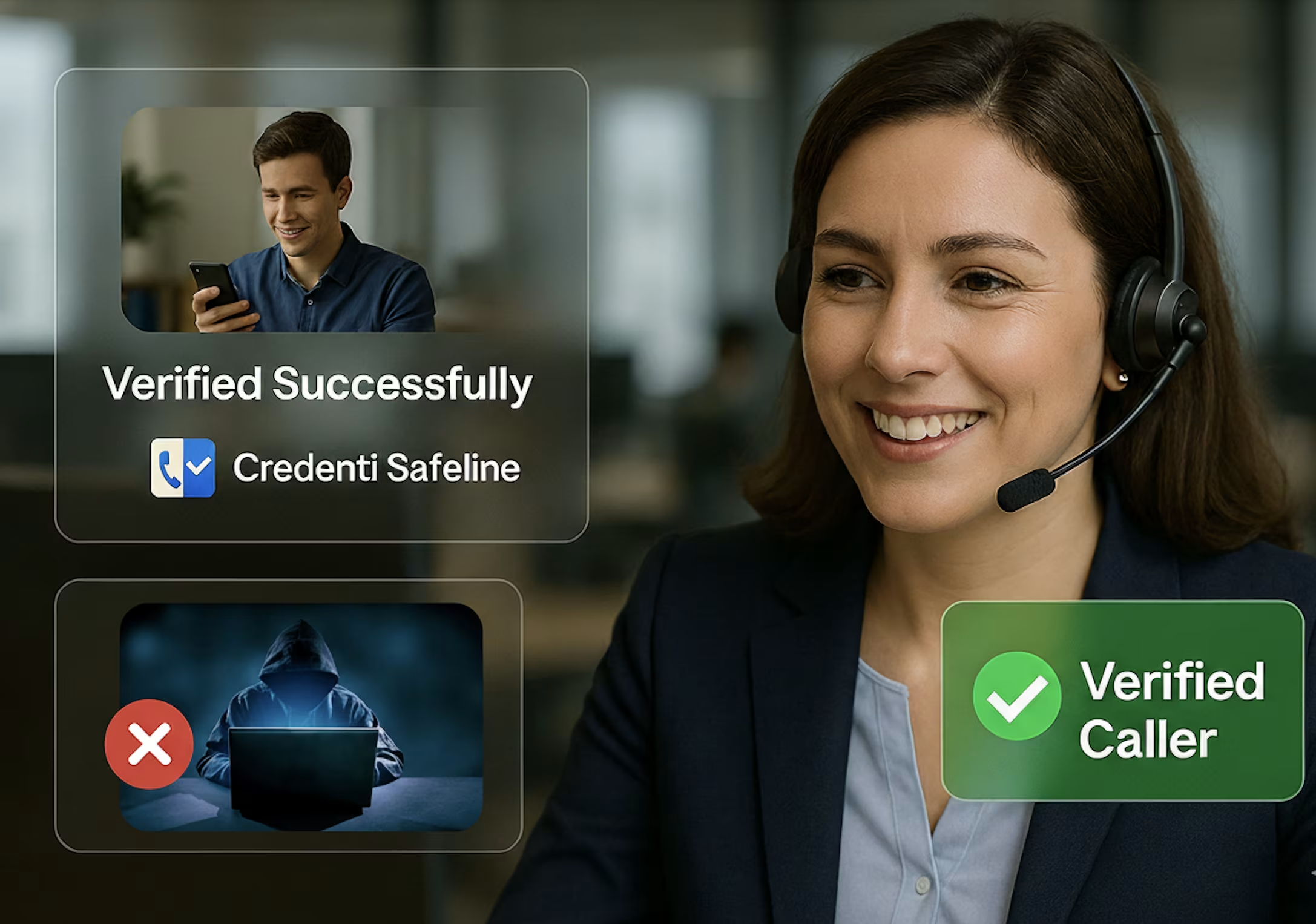Real-Time Caller Verification for Help Desks
Credenti SafeLine verifies identities before password resets, account changes, or support escalation — using TOTP, number matching, or facial comparison — to stop social engineering attacks at the help desk.
Ideal for organizations with inbound support calls from staff, contractors, or partners.

Why SafeLine
Stop Impersonation Attempts
Block attackers trying to socially engineer help desk agents by requiring multi-factor verification.
Real-Time Identity Verification
Challenge users live using biometrics, TOTP, or number matching before proceeding with support.
Compliance-Driven Design
Meet Zero Trust mandates and align with NIST, HIPAA, and CJIS for secure phone-based support.
How SafeLine Works (Facial Recognition & ID Proofing)

1. Caller Requests Support
User contacts your help desk by phone.

2. Agent Confirms Basic Info
Agent verifies known details like email or ID number.

3. ID Verification Link Sent
User receives a secure, time-bound link via email or SMS to begin ID proofing.

4. Biometric Match Confirmed
User scans government ID and completes selfie + liveness check. Match is confirmed via AI.

5. Verification Complete
Identity is verified and support session may proceed securely.
How SafeLine Works (TOTP & Number Match)

1. Caller Requests Support
User calls your IT or HR help desk requesting assistance.

2. Agent Confirms Basic Info
Agent verifies known details like email, employee ID, or phone number.

3. Verification Challenge Sent
User receives a TOTP prompt or number challenge on their device.

4. Verification Complete
Authentication is confirmed and support can securely proceed.
Supported Verification Factors
Google Authenticator
Delivers time-based one-time passcodes (TOTP) for user authentication. A proven, offline-capable factor supported on both Android and iOS devices.
Okta Verify
Supports push-based number matching challenges, device biometrics, and TOTP — integrating seamlessly with Okta-based identity workflows.
Microsoft Authenticator
Enables secure authentication using number matching, app notifications, and TOTP codes — aligned with Microsoft Entra ID and Azure AD environments.
Global ID Documents
Supports 7,000+ identity documents across 200+ countries — including passports, driver's licenses, and national IDs — using OCR, NFC, and AI-powered validation.
Powered by our tech partner Veridas.
Liveness Detection
Combines passive and active liveness detection to prevent spoofing attacks. From subtle motion analysis to randomized gesture challenges, users are verified as real, live individuals before support proceeds.
Powered by our tech partner Veridas.
Frequently Asked Questions
What is Credenti SafeLine?
Credenti SafeLine is a caller verification solution that protects help desks and call centers from impersonation and social engineering attacks by verifying the identity of inbound callers in real time.
How does SafeLine verify a caller’s identity?
SafeLine supports multiple verification methods including TOTP via authenticator apps, number matching challenges, and biometric facial verification with government-issued IDs.
Do callers need to install an app?
No, verification can be completed using any device with a browser and camera. SafeLine supports app-based as well as web-based verification workflows.
Is SafeLine compliant with industry standards?
Yes, it uses NIST-evaluated biometric technology and liveness detection certified by iBeta Levels 1 and 2, aligning with compliance needs like CJIS, HIPAA, and Zero Trust mandates.
Can SafeLine integrate with my existing IdP?
Absolutely. SafeLine integrates with major identity providers including Okta, Microsoft Entra, and others, ensuring seamless identity verification across platforms.





